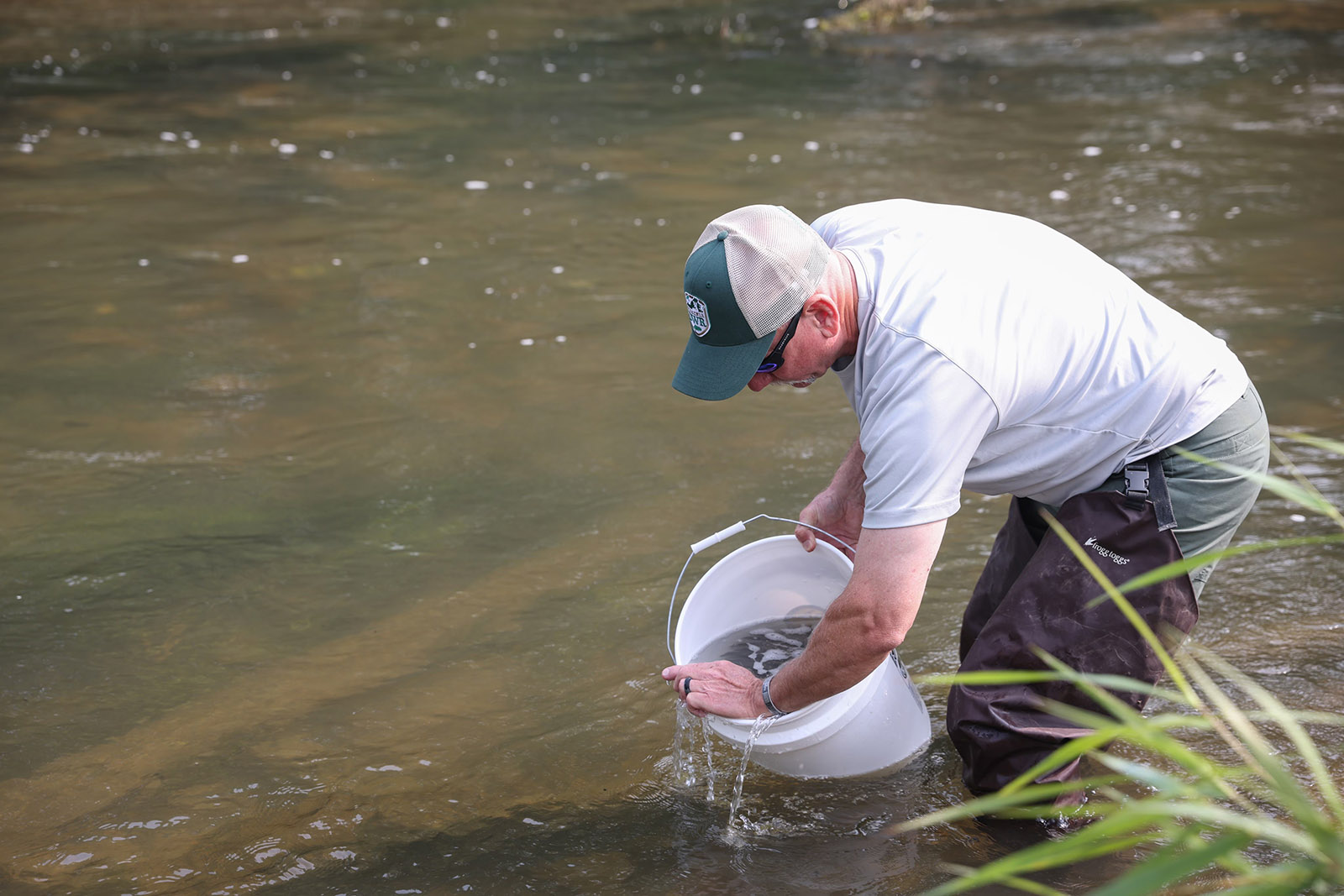By Bruce Ingram
Photos by Meghan Marchetti/DWR
In recent years, the Shenandoah watershed’s smallmouth bass population has largely been on the upswing due to consistent spawning. Now, Shenandoah bronzebacks are receiving another boost as part of a five-year study. This spring, Virginia Department of Wildlife Resources (DWR) Region 4 Fisheries staff successfully raised, marked, and stocked more than 30,000 smallmouth fingerlings into several rivers and lakes within the western counties of Virginia. They’re planning to track those marked hatchery fish to help determine how stocked fish contribute to fish populations.
Their goal is to focus on utilizing targeted stocking of hatchery-raised smallmouth bass to assist with the recovery of adult populations. This experiment will hopefully yield positive results that can be replicated within more imperiled populations throughout the Commonwealth. Their priority study waters include a 10-mile section of the South River in Augusta County and a 10-mile section of the South Fork Shenandoah in Page County.
Smallmouth bass are notoriously difficult to raise. Region 4 District Fisheries Biologist Jason Hallacher says that Front Royal Fish Hatchery staff needed to carefully collect healthy brood stock just before they spawn, then in the hatchery environment, provide consistent water temperatures and dissolved oxygen, good spawning habitat, plenty of food, and hope for good weather. Cold snaps during the spawn have a habit of driving bass from their nests. Once the bass spawn, the eggs are fanned by the adult down into the nest gravels.
In a few short days, the eggs begin to hatch and small baby bass, called black fry, slowly emerge from the gravel. It is at this point that hatchery staff carefully siphon and net the fry out of the nursery areas and take them to a finishing pond, Hallacher explained. The finishing ponds are full of plankton for the black fry to feed on. The bass grow quite rapidly in the ponds, and by the end of June through mid-July this year’s crop of bass had grown to three inches and were ready to be released into the wild.

DWR hatchery staff netting fry out of the hatchery nursey channels.
This spring, hatchery staff met and surpassed the requested allocation of smallmouth for both the South Fork Shenandoah and South River, which resulted in personnel releasing surplus fingerlings into the North Fork Shenandoah River, Hearthstone Lake, and Lake Laura. Now in year two of the study, DWR fisheries biologists hope to provide survival-related data from the past two years in 2025. To determine the survival of the stocked smallmouth, biologists use fin clips to track unique genetic markers from the parents of the stocked bass.
“Essentially, a year after we stock, we attempt to catch 1-year-old smallmouth within the study reaches and take a fin clip from each fish that we catch,” Hallacher said. “We then send those clips to the lab for analysis, and the geneticists can tell us if each individual came from one of our brood stock or from the wild. This is a critical step in our study, because it allows us to evaluate how much the stocked fish contribute to the population.
“We will never be able to raise enough smallmouth to completely replace a lost year class of fish. But we are hoping that these stockings will help even out average or poor spawning years. The recent spawns on the South River have not been as good as the South Fork, so these stockings should really help the former’s fishery. Of course, nothing is as good for a fishery as a great wild spawn,” Hallacher said.

A DWR fisheries biologist stocking smallmouth fingerlings.
The biologists are very fortunate to have a lot of population data on these fisheries as well as angler data from creel surveys. Once the five-year stocking experiment concludes, biologists will sample the fish population intensively to determine not only the contribution of the stocked fish, but also whether or not the population has responded to propagation efforts.
“We will also conduct a creel survey and hopefully see that angler catch rates have increased,” Hallacher said. “Because at the end of the day, making anglers happy is the ultimate goal.”


